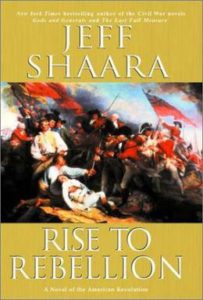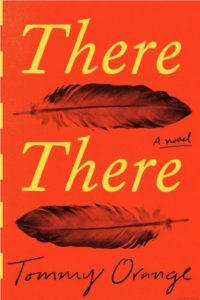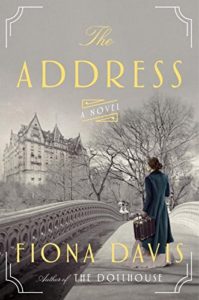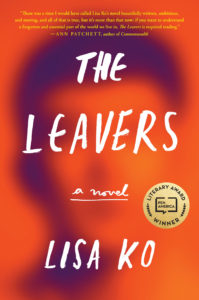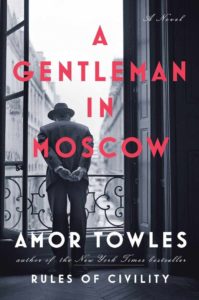Pete’s Pick
December, 2018
Rise to Rebellion
Jeff Sharra
Published by Ballantine Books
Introduction
This book by famed Civil War novelist Jeff Shaara is the first of a two volume set of novels telling the story of the American Revolution through the perspectives of several of the key people involved in the history of the American Revolution. This novel traces the history of the American Revolution from early in 1770 through the summer of 1776 when the Declaration of Independence has been ratified by the 13 colonies. It tells the history using the actual words or accounts of events that took place as recorded by these key participants.
Author
Jeff Shaara is well known for his Civil War novels Gods and Generals, The Last Full Measure, and Gone for the Soldiers. This novel is the first of two depicting the American Revolution.
Story
The novel tells the story of the time and events leading up to the beginning of the Revolution through the perspectives of Benjamin Franklin, John Adams, George Washington, and Lieutenant General Thomas Gage (Great Britain’s Commander-in-Chief of the British soldiers stationed in America at the beginning of the Revolution).
We hear the story of the events that took place during the six-year time through the words and thoughts of these key actors. Shaara has used their letters and memoirs, their journals and diaries, their own written histories, and accounts written by others who were there during these times. Each chapter is through the eyes of one of the participants and we get an opportunity to switch back and forth between the players and get a different take on what happened during an event. It is awesome to begin to understand the reluctance of these key actors in American history to actually participate in events that lead up to the beginning of the Revolutionary War. Even as one who has always loved history, to be inside the minds of these individuals was incredibly sobering as they fretted and stewed over King George’s reluctance to understand their unique setting and circumstances—a world vastly different from 18th Century Europe and England. The whole frontier setting and the unique needs of relating to undeveloped territory simply did not register in the minds of the British Parliament or King George.
The story takes us from the first confrontation with British troops in Boston in early 1770 to the formation of the First Continental Congress where the great minds of American colonists begin debating what is to become of their relationship with Great Britain. We get an inside look at the corruption of British Parliamentary government and their absolute refusal to consider the unique situation of their American colonies. As the tensions build because of British taxation, and the American resistance to these unfair taxes, we relive the experience of the Tea Party in Boston which ultimately leads to the building up of the British military presence in America. We then see the tensions spill over into actual shooting during the Battle of Concord Hill and Lexington. We get to hear the debates during the Second Continental Congress as the colonists realize that the only effect way to respond to their situation is to band together as a union of 13 colonies and create their own army to defend against the increasing British military threat.
I sat on the edge of my seat as each episode unfolded and became a cheerleader for these great early Americans who founded our country.
Evaluation
This is a book for those who love American history and want an inside view of the events that led up to the American Revolution. It is for those who relish getting to know the key players in history and understanding the circumstances that surround the historical events that took place. It gets intensely personal in getting to know these key participants. As a lover of American history, I highly recommend this book. As an avid reader of Jeff Shaara, this book is very much in keeping with what he has done in telling us the story of the American Civil War. I highly recommend this book.
Chris’s Pick
November, 2018
Circe
Madeline Miller
Published April 2018
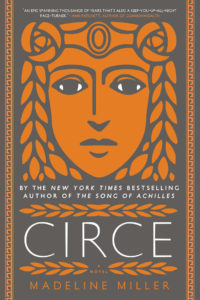 The epic poet, Homer, gave us two of western civilization’s key works in the Iliad and the Odyssey. As a young girl, I was mesmerized by the myths of the Greek gods and goddesses depicted in these stories.
The epic poet, Homer, gave us two of western civilization’s key works in the Iliad and the Odyssey. As a young girl, I was mesmerized by the myths of the Greek gods and goddesses depicted in these stories.
Circe appears in the Odyssey as a witch-goddess living on her island of Aiaia, where, myth tells us, she turns Odysseus’ men into swine, then later seduces him to live with her for a year. Now, Madeline Miller explores a reason behind the “madness” and gives us this enthralling novel.
Written in the first person, we first meet the nymph Circe as an un-loved child, daughter of the sun-god Helios. Her disapproving mother discourages her to speak, her voice is so loathsome to hear (Circe learns much later from Hermes that her voice sounds like a mortal). She turns to the world of mortals for companionship and discovers her own power through witchcraft. Headstrong, passionate, and impulsive, Circe uses her skill in a jealous rage, and turns the nymph Scylla into a six-headed monster who devours seamen who mistakenly sail too close to her island. Threatened by her witchcraft, Zeus punishes Circe by banishing her to Aiaia forever, where she must live alone.
Truly alone, without protection from her family, Circe must learn to safeguard her island and herself, and does so by weaving protective spells for the next thousand(?) years (she is immortal, after all). Then, about halfway through the book, Odysseus arrives on her island and she becomes enchanted by this mortal. Followed by motherhood, Circe discovers a love more powerful than she has ever felt, and with that, new fears. For, with the appearance of Odysseus, we also get the fearsome Athena (by far, my favorite goddess as a child—I may have to reconsider that now.)
This is a captivating story, and throughout the book we revisit other stories so familiar to us—of the Minotaur (birthed by Circe’s sister in Knossos); of Daedelus and Icarus, of Circe’s niece Medea, who she tries to counsel. We are reminded of the battle between the Titans and the Olympians and of the cruelty of the gods.
Madeline Miller’s Circe is a woman who loves, suffers, grieves, and yearns, and yet has enormous strength that can only be dredged from her own self. Though we might not have recognized it seven thousand years ago when these myths were born, Circe is a goddess-feminist!
In the review by the Washington Post, Ron Charles writes:
…Which is one of the most amazing qualities of this novel: We know how everything here turns out — we’ve known it for thousands of years — and yet in Miller’s lush reimagining, the story feels harrowing and unexpected. The feminist light she shines on these events never distorts their original shape; it only illuminates details we hadn’t noticed before.
I don’t think you need to have read the Odyssey, or have more than a passing interest in the Greek gods to love this book, but it helps. I kept my iPad nearby to remind me who the latest character was as they passed through the page, only to find at the end of the book a pretty concise explanation of who’s who in that world. Wonderful reading, well–written, this book kept me up at night to finish.
Barbara’s Pick
October 2018
Eleanor Oliphant Is Completely Fine
Gail Honeyman
Penguin Books, 2018
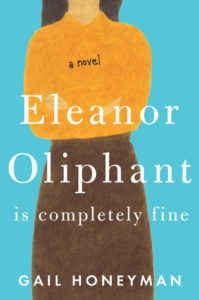 Warning: The following review sounds as if it’s for a depressing book—but surprise, it’s a triumph. Just hang in there!
Warning: The following review sounds as if it’s for a depressing book—but surprise, it’s a triumph. Just hang in there!
Probably we have all known someone like Eleanor Oliphant—a creature of habit who sometimes blurts out exactly what she’s thinking, even if it’s unkind; no one has ever told her people have feelings, least of all her.
But quickly we learn about her exhausting phone calls with her institutionalized mother and her lonely weekends spent eating pizza in her apartment and drinking herself into a stupor.
A chance encounter with the new IT guy at work and an elderly gentleman open the world to Eleanor, who was used to her solitary life seeing only the same few people.
Slowly she begins to learn about what is considered normal in the real world, and moves past being just “completely fine.” Along the way the reader witnesses her incisive wit as well as the shattering childhood she endured.
I hope we will hear more from Eleanor someday—her voice is that unforgettable. At least we have a movie to look forward to, as Reese Witherspoon has purchased the rights!
Sonya’s Pick
September, 2018
The Boys in the Boat: Nine Americans and their Quest for Gold at the 1936 Berlin Olympics
Daniel James Brown
Penguin Books, June, 2013
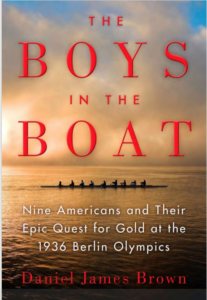 I'm always looking for a biography or non fiction that is not too serious. One of the new librarians recommended this book and I LOVED it. It’s a story of a determined young man, Joe Rantz, who was born in the 1930's (the Great Depression is woven throughout the book). After his mother passes away, his father remarries and leaves Joe, a young teenager, to fend for himself in the Washington woods. Already industrious and independent; out of necessity, he becomes very self reliant.
I'm always looking for a biography or non fiction that is not too serious. One of the new librarians recommended this book and I LOVED it. It’s a story of a determined young man, Joe Rantz, who was born in the 1930's (the Great Depression is woven throughout the book). After his mother passes away, his father remarries and leaves Joe, a young teenager, to fend for himself in the Washington woods. Already industrious and independent; out of necessity, he becomes very self reliant.
Joe is quite lonely and not trusting of many folks but luckily is a good student. He meets up with a girl who stays with him and he enrolls at University of Washington. Being from a poor upbringing, he doesn't fit in with wealthy elite classmates but he makes the rowing team which gives him a sense of belonging.
Now, rowing was one of the most popular sports in America at this time. It compares to the popularity of football and basketball today. Most crew programs were on the East Coast in prestigious colleges, but there was an outstanding coach and an English boat builder in Washington that wanted to win!
I did not realize how grueling the practices are for this sport. Because of his dedication and ability to withstand the pain and pressure, Joe succeeds. He learns to depend and trust the other eight men in the boat who sync together beautifully and pile up victories all across the country against esteemed teams from Harvard, Yale, and Berkeley.
They get the chance to represent the USA at the 1936 Olympics in Berlin. Despite last minute failures, there was victory. It was a powerful blow to Hitler and his idea of Nazi superiority.
So there is personal drama, interaction with the boys and the coaches on the team, and is even a bit of politics in there. It was a wonderful read about something I knew nothing about and enjoyed tremendously. The author interviewed Joe, (who passed away in 2000) and included photos.
Karen's Pick
August 2018
There There
Tommy Orange
Knopf June 5, 2018
There There is a powerful and gritty first novel by Tommy Orange, a registered Cheyenne and Arapaho Native American. The title is borrowed from Gertrude Steins famous quote about Oakland, California, "There is no there there."
This book is an all-too-real work of fiction. It is intended for the reader who would rather not be reminded of the results of poverty, racism, and alcoholism on today’s Native American. Orange offers a lengthy prologue that unapologetically confronts the reader with the backstory of the American Indian. He writes of the first Thanksgiving and those following when colonists poisoned the natives while dining at their tables; soldiers set villages on fire and performed acts of genocide and infanticide to eradicate native communities. These horrific deeds were commonly referred to as "successful massacres" by triumphant perpetrators. Orange submits, "The bullets were premonitions, ghosts from dreams of a hard fast future." We are also asked to recollect the annihilation that took place on native lands as part of the Indian Relocation Act; a part of the Indian Termination Policy that attempted to assimilate Indians into cities so they would soon look and act like the white inhabitants - the process of Urbanity.
This is where the novel There There begins. Orange introduces us to the twelve main characters in the "story." They are middle-aged women and men, young girls and adolescent boys, elders, all Native Americans who are trying to make sense of their lives in the 1970’s while living in Oakland, California. In this book, they are referred to as the Urban Indian.
The reader soon realizes while Orange refers to the beauty of Indian lore, there is very little joy, love or humor embodied in any of his characters. He introduces us to Tony Loneman, a young man with Fetal Alcohol syndrome, Dene Oxendene, who is struggling to become a documentarian, sisters Jacquie Red Feather and Opal Viola Victoria Bear Shield who, with their homeless family, occupied Alcatraz to protest the plight of the Urban Indian. We also "meet" Blue, a youth service coordinator, a battered wife, and Jacquie Red Feather’s daughter adopted into a white home. Bill Davis, a felon and now janitor at the Oakland Coliseum, and teenage brothers Orvil, Lony, and Loother are actively questioning what it means to be Indian.
The complex stories of these characters test our memory. Initially Orange assigns one chapter to each individual and then begins to weave relationships of other characters into their lives in subsequent chapters. Orange uses this method of character development to eventually inform us that all of his Urban Indians lives will intersect at the Big Oakland Powwow held at the Oakland Coliseum. The reader often feels empathy with the characters that will bring to the Powwow their collective angst, tragedy, loss, loneliness, and their own indomitable reasons for being "there." However, it is young Orvil Redfeather, who is searching for his native roots, that provides a powerful meaning to the Powwow.
Orange writes of Orvil's experience:
He is surrounded by the variegation of color and patterns specific to Indianess, gradients from one color to the next, geometrically sequenced sequined shapes on shiny and leathered fabrics, the quill, bead, ribbon, plume, and feathers from magpies, hawks, crows, and eagles…. To dance as if time only mattered insofar as you could keep a beat to it, in order to dance in such a way that time itself discontinued, disappeared, ran out, or into the feeling of nothingness under your feet you jumped, when you dipped your shoulders like you were trying to dodge the very air you were suspended in, your feathers a flutter of echoes centuries old, your whole being a kind of flight.
Orange offers further insight into the "why" of the Powwow and his Urban Indians’ state of being. He quotes from writer James Baldwin's, Stranger in the Village, "People are trapped in history, and history is trapped in them."
For this reader the surprisingly abrupt ending of There There was a relief. The time spent with the battered, broken and diminished characters was often difficult especially since their ability to endure was as close to a triumph as they would ever get. However, I believe it was the author’s intent to intentionally try to make the reader feel uncomfortable while reading about plight of the Urban Indian and what it means to be Native American in contemporary society.
Tommy Orange is a descriptive writer, whose stream of consciousness style is at times challenging. His characters are flawed, and his story is troublingly.
As another reviewer recently wrote,
This book will make you sad - read it anyway.
This book will make you mad - read it anyway.
This book will remind you of the lies we were taught as children - read it to remember.
I highly recommend reading There There. You just need to!
Pete's Pick
July 2018
Camino Island
John Grisham
Doubleday, June 2017
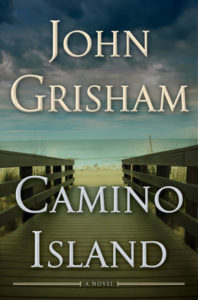 This book is one of the latest of famed author John Grisham. However, it is out of character for the way Grisham’s novels are usually cast. Normally the novel features some lawyer or lawyers who are fighting injustice. The injustice could be in a particular industry, it could be in a wrongful criminal or civil charge, or it could be against the country’s legal system. In this case, the story line doesn’t involve lawyers as the focus. It does involve a crime, and it does involve an industry. But in a far different way than Grisham usually depicts.
This book is one of the latest of famed author John Grisham. However, it is out of character for the way Grisham’s novels are usually cast. Normally the novel features some lawyer or lawyers who are fighting injustice. The injustice could be in a particular industry, it could be in a wrongful criminal or civil charge, or it could be against the country’s legal system. In this case, the story line doesn’t involve lawyers as the focus. It does involve a crime, and it does involve an industry. But in a far different way than Grisham usually depicts.
John Grisham is a well-known author of thirty novels, one work of nonfiction, a collection of stories, and six novels for young readers.
This book is the story of the theft of the five original manuscripts of F. Scott Fitzgerald housed at Princeton University’s Firestone Library and the search to find the thieves and the manuscripts. The story begins with a gang of five professional thieves who specialize in art and rare artifacts (which can be sold back to the owners for ransom) carrying out the elaborately planned theft of the manuscripts from Princeton University’s Firestone Library. We are taken into the heart of the activity of the thieves as they carryout this masterfully planned theft. The theft was successful, and we are taken to the first few days after the theft. Ultimately, the members of the gang opt to go separate ways to lay low for a while. Two of the thieves are caught within a few days. The remainder of the story focuses on the search for the other three thieves and the missing manuscripts.
The remainder of the story takes us deep into the book selling industry, i.e., bookstores. The majority of the story takes place on Camino Island, Florida. It is a community with a well-known independent bookstore called Bay Books run by Bruce Cable. Bruce loves to read and if he isn’t talking with someone, he usually has his nose in a book. He accidently developed an interest in rare first editions when his father died, and Bruce discovered he had a number of first edition books. Over the years, Bruce developed both his knowledge of rare books as well as building a very respectable collection of his own.
The story turns to Mercer Mann, a 31-year-old adjunct professor of freshman literature at the University of North Carolina at Chapel Hill. She has just learned that her position is being eliminated because of budget cuts. Her primary achievement to date was the publication of a novel and a collection of stories. She’s been trying to come up with an idea for a second novel and took the adjunct professor position to pay the bills. As she is pondering what to do, she receives an invitation to lunch under the pretext of someone searching for a teacher of creative arts at a private academy. As it turns out, the woman is a senior investigator with the private insurance company that has insured the F. Scott Fitzgerald collection of original manuscripts at Princeton University’s Firestone Library. They are on the hook for a $25 million settlement in six months if the manuscripts are not recovered. Elaine Shelby is interested in Mercer Mann for several reasons. One, she is a published author. Two, as a girl Mercer spent her summers on Camino Island with her grandmother in a cottage on the beach. The grandmother has passed away, but the cottage is still owned by the Mann family. Three, Elaine is convinced that Bruce Cable of Bay Books knows about the missing manuscripts and may even have them. Elaine is interested in recruiting Mercer to spend the summer on Camino Island and get to know the author community and Bruce Cable and see what she can find out about the possibility of the missing manuscripts through Bruce Cable.
The story does an awesome job of exploring the ins and outs of the bookselling business. If you like books, you will be intrigued by many of the tips of the trade and facts that are gleaned as the story takes place. It is a fascinating examination of the author’s mindset as each one struggles to leave their mark. It is also a fascinating look at the rare book world and the intrigue that exists in that world. For Grisham, this is a wonderful story outside the walls of the courthouse and lawyers’ conference rooms. I highly recommend this book if you like Grisham, and even if you’ve never read him.
Chris's Pick
June 2018
My Dear Hamilton, A Novel of Eliza Schuyler Hamilton
Stephanie Dray and Laura Kamoie
Published by HarperCollins, 2018
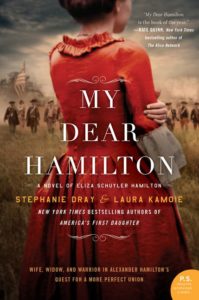 If you are a fan of these reviews, and have read any of mine, you will note that this book is a departure from my usual “Books (I) Love”. Drawn to exquisite writing, the turn of a phrase that stops my heart, a carefully crafted observation that speaks to my own truth…My Dear Hamilton is not that book. Rather, this historical novel is all about content. To say it is fascinating is an understatement.
If you are a fan of these reviews, and have read any of mine, you will note that this book is a departure from my usual “Books (I) Love”. Drawn to exquisite writing, the turn of a phrase that stops my heart, a carefully crafted observation that speaks to my own truth…My Dear Hamilton is not that book. Rather, this historical novel is all about content. To say it is fascinating is an understatement.
After seeing Broadway’s Hamilton, I became interested in re-learning the history of our country’s founding. Watching the show (and listening to the genius lyrics), I realized I had a very simplistic understanding as to how all “this” happened. I didn’t know, for instance, why Thomas Jefferson is portrayed in the production as a simpering fool. Don’t we learn as children he was one of our great presidents?
In Ron Chernow’s definitive biography of Alexander Hamilton (as well as in My Dear Hamilton and the Broadway play), the seething hatred of Jefferson, Monroe and the Jeffersonian Republicans is a reflection of the times: “Feelings ran so high that Jefferson told one correspondent, ‘Men who have been intimate all their lives cross the street to avoid meeting and turn their heads another way, lest they should be obliged to touch hats.’ Hamilton thought that America was in an undeclared civil war that had segregated the country into two warring camps.” Treachery, lies, slander, manipulation of the press, even murder run rampant through these pages. The two-hundred-year-old story sounds so current, it is frightening. The Alien and Sedition acts passed then are warning bells for today.
My Dear Hamilton is a meticulously researched portrayal of the birth of America through the eyes of Eliza “Betsy” Schuyler Hamilton. Married to the man who must be given credit for the right to vote, a free press, written constitutions, a federal banking system, representative government, a standing army and the founding of West Point, he was also infamous for a sex scandal and, of course, the duel that killed him.
Eliza, the daughter of a general, emerges through these pages as a strong individual in her own right. The mother of eight children and several foster children, she is her husband’s strength and ally, often guiding him away from his own worst instincts. Despite heart-wrenching betrayals by those she loved the most, Eliza Hamilton became an incredible advocate for her husband’s legacy after his death. An ardent patriot, much of what Alexander Hamilton is remembered for today is due to this woman.
Never one to dismiss injustices, Eliza Hamilton also founded the first social services program in the country to provide for widows and orphaned children.
Eliza Hamilton lived 90 years, and we visit through her eyes not only her remarkable husband, but also George Washington, James Monroe, James and Dolley Madison, Thomas Jefferson, Aaron Burr, Lafayette (both father and son--she took Georges into her own home when his father was imprisoned), even Benedict Arnold. And that is the short list. Towards the end of her life, she stands at the dedication of the Washington Monument next to Congressman Abraham Lincoln.
I appreciate that the authors provide several addendums at the end of the book; notes and insights into their research and research process. Ron Chernow’s Alexander Hamilton is an excellent sidepiece to this novel, but let’s face it, history presented in story-form is much more enjoyable to read – which is why I loved My Dear Hamilton.
Arnie’s Pick
May 2018
The Hundred Year Walk
Dawn Anahid MacKeen
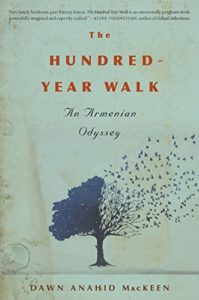 Investigative journalist MacKeen was born and educated to write this epic tale of the early twentieth century genocide of over a million Armenians by the Turkish government. World War One, then known as the “Great War” started with the assassination of members of a royal family and quickly grew into a widespread inferno.
Investigative journalist MacKeen was born and educated to write this epic tale of the early twentieth century genocide of over a million Armenians by the Turkish government. World War One, then known as the “Great War” started with the assassination of members of a royal family and quickly grew into a widespread inferno.
Author MacKeen grew up hearing bits of her grandfather’s life in pre-World War One Turkey and his remarkable survival through the mass deportations and his fortunate escape. Grandfather Stepan only attended school through the seventh grade, but he was keenly observant and wrote detailed journals of his experiences.
Dawn’s mother had implored her for years to investigate and write the story. Thinking that it would take her two years, Dawn finally relented to her mother’s frequent requests and set about researching and writing. The “two year” project took Dawn ten years in order to learn the journal’s Armenian language and to travel to the described Turkish and Syrian sites.
To this day, various Turkish governments have denied that the Armenian genocide ever occurred. Over a million Armenians “disappeared into the desert.” Really?
Author MacKeen used her grandfather’s journals to guide herself through modern day Turkey and northern Syria in order to more fully understand and appreciate the perils of her grandfather’s odyssey. Even in the twenty first century, as an American and as a woman she was viewed with great suspicion in many locations.
Mackeen’s book alternates back and forth between Grandfather Stephan’s 20th century contemporary account and her 21st century narration of her journey to the sites described by her grandfather. It is a unusual tale of the first genocide of the 20th century. Some believe that Hitler knew about it and used it as a guide in the Nazi persecution of Jews, Gypsies, and other minorities.
This tale is one of strength and luck, and sometimes extraordinary kindness. The journals, archives, travels, and meetings with survivors and their families provided the pieces of this quilt that author Dawn Anahid MacKeen has stitched together so skillfully. As Americans, immigrants all, learning about our roots tells us who we are and who we aspire to be.
Barbara's Pick
April 2018
Little Fires Everywhere
Celeste Ng
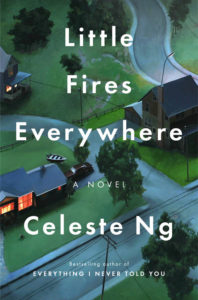 Celeste Ng’s first novel, Everything I Never Told You, told the story of a biracial family in the Midwest. Her most recent effort, Little Fires Everywhere, is centered in Shaker Heights, Ohio, where the author spent part of her childhood. The book tells the story of the Richardson family—parents Bill and Elena, and children Trip, Lexie, Moody, and Isabelle—and Mia and Pearl Warren, who rent the upstairs of the Richardsons’ duplex. The two families become slowly entangled and nearly strangle one another before the “little fires” are set.
Celeste Ng’s first novel, Everything I Never Told You, told the story of a biracial family in the Midwest. Her most recent effort, Little Fires Everywhere, is centered in Shaker Heights, Ohio, where the author spent part of her childhood. The book tells the story of the Richardson family—parents Bill and Elena, and children Trip, Lexie, Moody, and Isabelle—and Mia and Pearl Warren, who rent the upstairs of the Richardsons’ duplex. The two families become slowly entangled and nearly strangle one another before the “little fires” are set.
In both books, Ng gives near-plot-spoiler information in the first few pages, with the reader left to discover how the story ended up this way. She is such a terrific writer that the reader wants to follow her careful lead.
Ng set the story in the 1990s (we’re sure because the teens watch Jerry Springer every day after school) so that there was no social media or ease of obtaining information from the Internet. A subplot concerning an abandoned Chinese baby and a custody battle inserts an additional pair of mothers into this contest between rule-bound Mrs. Richardson (rarely Elena) and free spirit Mia. The complexity of the mother-daughter relationship is front and center in nearly every chapter.
It’s too hard not to offer spoilers, so I would just encourage you to read this novel!
Karen’s Pick
March 2018
The Address
Fiona Davis
Dutton, August 1, 2017
368 pages
If you are a reader of historical fiction and lover of a good thriller, The Address by Fiona Davis is a book for you. The “address” refers to Manhattan’s famous Upper West Side apartment building, The Dakota. The author’s description of the design and construction of NYC first luxury apartment building offers clear insight into the excesses associated with The Gilded Age. The Dakota is pers
onified by Davis and becomes a character that evokes a wide range of emotional responses. (Note: it helps to be familiar with The Dakota prior to reading).
The Address takes place between two timelines; 1884 just prior to the opening of The Dakota and 1985 during New York City’s period of boom and bust. What links these eras is the story of two women living in the Dakota one hundred years apart. Davis’s fluid style of writing makes the transitions from one period to another effortless.
The story begins in 1884 when English immigrant Sara Smythe is hired as the managerette of the Dakota. Reluctantly Sara becomes romantically involved with the buildings talented architect Theo Camden. Early in the book, the reader learns that Theo is murdered in a crime of passion. Fast forward to 1985, when the reader meets Bailey Camden, a fresh out of recovery interior designer who is a “descendant” of the wealthy Dakota architect. Through a discovery in The Dakota basement of old Camden family trunks, the women’s compelling stories come together to reveal the dark secrets.
Fiona Davis’s well-written The Address is an engrossing mystery that is rich with historical detail and nuanced characters. The continual twists of the plot and the surprise ending keeps the reader compulsively interested.
The Leavers
Lisa Ko
Algonquin Press, 2017
The Leavers, a novel set in New York and Fuzhou, China, is the story of a young man’s search for his undocumented Chinese mother who leaves for work one day and disappears without a trace. Eleven years old, and now motherless, Deming Guo is eventually adopted by a well-meaning white couple who move him out of the Bronx to upstate New York. Issues of race and identity shape his teenage years, as we watch Deming (now “Daniel”) cope with memories, growing up, the aspirations and expectations of his adopted parents, and, above all, an overriding sense of loss.
Interspersed with Deming’s tale is Polly Guo’s, his mother. As the reader, we move through the book searching for an understanding as to why she has left her son, and then, when we meet her again years later, why she chooses not to seek him out as an adult. We learn of her childhood in rural China, and the escape from a marriage that has driven her pregnant and alone into America. Far from the idealized, nurturing mother, Polly is a complicated character, full of dreams and determination. Motherhood was never a deliberate choice for Polly. At one point, she even leaves the baby under a park bench and runs… she returns moments later but the horrified reader has a new understanding of her compelling, even obsessive, need for freedom.
Essentially, The Leavers is about a mother and son; what brings them together and then takes them apart. It is a struggle with life choices, determining what is wrong or right. It is a struggle between what is expected and what is desired. It is a story of both those who leave, and the effect on those who have been left.
The Leavers received the PEN/Bellwether Prize for Socially Engaged Fiction and was a finalist for the 2017 National Book Award in Fiction. Although Ko never politicizes this novel, she was inspired by the 2009 true story of a woman from Fuzhou, China, who was arrested by immigration agents on her way to Florida in search of a job. The woman left behind a small son. Beautifully written, The Leavers stays with the reader long after the final page has been turned.
Sonja’s Pick
January 2018
A Gentleman in Moscow
Amor Towles
Viking Press, September 2016
This book is like a piece of chocolate...or a special dessert. I savor it not wanting to read too much so I have some left to read for next time.
So what's it about? A Russian aristocrat, Count Alexander Rostow, living under house arrest at the luxurious Metropol Hotel in Moscow . Where he once had a lovely apartment, he is now destined for the attic. Does he moan? NO. Does he have adventures you and I would crave? YES.
Such a delightful book written so brilliantly. The prose is electrifying. A very skilled storyteller, rich and purposeful.
We meet a little girl Nina who lives in the Hotel and catches the Count's eye and they begin a relationship that continues throughout the book. A long book encompassing many years.
It's about relationships. I dare to tell a few, but don’t want to spill the beans. There is the chef and the maître d' of the hotel's elegant restaurant, a seamstress there for the clientele. He dines elegantly daily and we see the clientele changing as politics change. First nobles, then comrades. There are detailed descriptions of people, rooms, memories. There is an actress who savors the Count's relationship; and an old friend whom he often eludes to.
Poets come to visit. An American adds political flavor.
The common courtesies on which his life was founded are being ignored and even lost. We are given a glimpse into the previous life of this highly educated noble, who never was expected or had to work, and enjoyed parties and frivolity.
For me a fictional novel written in a real –non fictional situation-- is my most interesting read. A little learningand a lot of fun.
But it's the philosophical, off hand writing that is invaluable. I loved it. Hope you will too.
